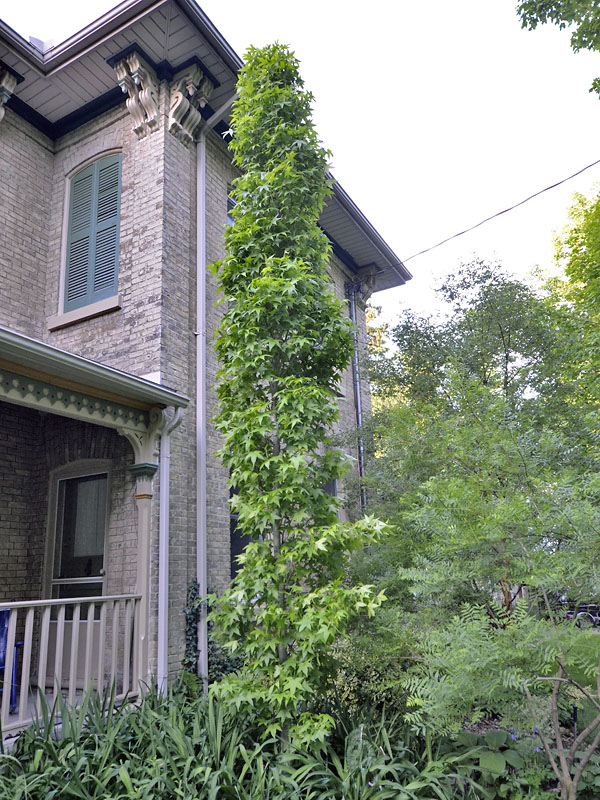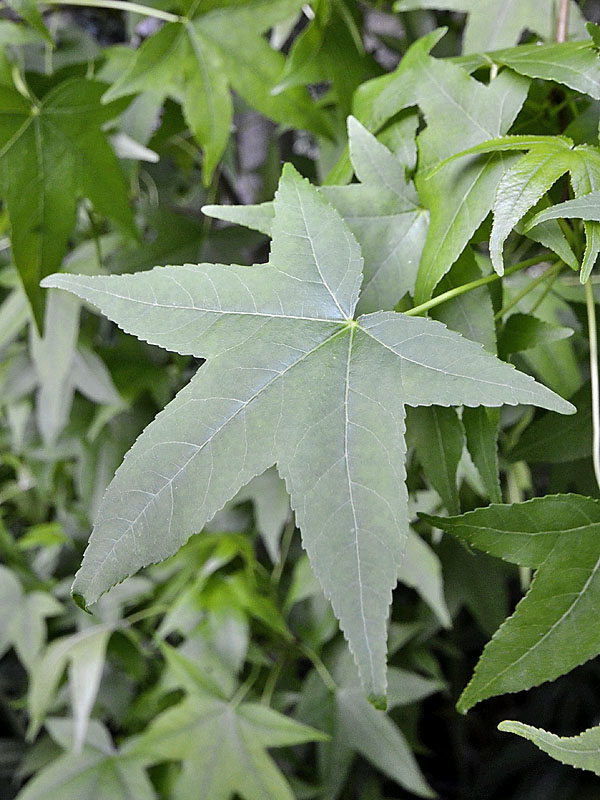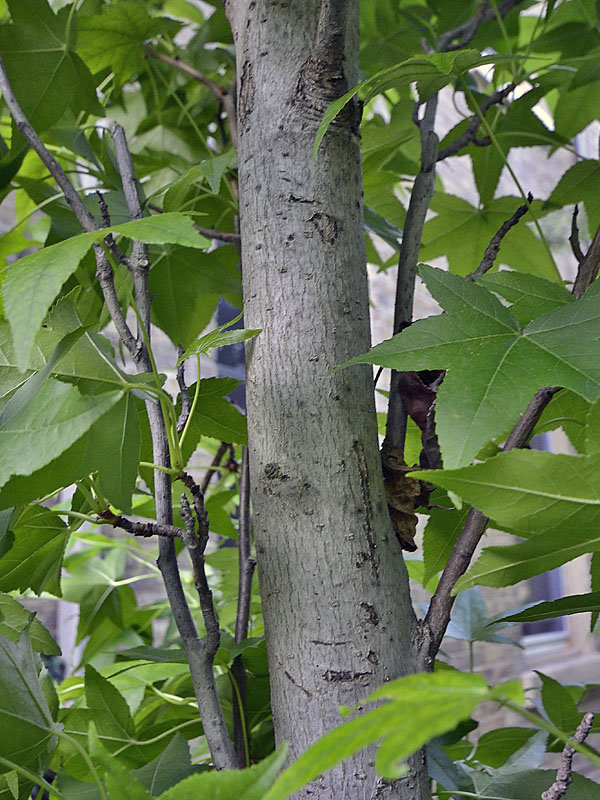| General Description | The Sweetgum is a tall columnar, long-lived, deciduous tree that is suited to small spaces due to its narrow width. It has glossy, deep green, star-shaped leaves turning, red, orange, yellow as well as burgundy in autumn. Although it produces flowers and bears fruits, it is more popular for its autumn colour and narrow form. |
| ID Characteristic | It is easily recognizable by its columnar shape, dense form as well as its deep green star shaped leaf. Flowers are greenish yellow and fairly inconspicuous. The seed-filled, spiky-textured fruit balls develop and drop in autumn in a small area since the Slender Silhouette is narrow. |
| Shape | Columnar shaped tree. |
| Landscape | The Liquidambar styraciflua works well as an urban street tree or landscape tree; shade or accent. The gorgeous yellow and red colour of Sweetgum's autumn foliage makes it very popular as an ornamental and could also be used as an informal hedge. This tree can be used as a multi-seasonal specimen because of their greenish yellow flowers in the spring, deep green foliage during the summer, and its vibrant autumn colours consisting of reds, yellows, oranges as well as a dark burgundy colour. |
| Propagation | Seeds undergo only a short period of dormancy, but germination rate is increased significantly by cold, moist stratification at 41 degrees Fahrenheit for 15-90 days; leafy cuttings taken can be rooted under mist. |
| Cultivation | This tree should be ideally grown in full sun but will tolerate part shade. The Sweetgum is fairly tolerant of different soils but grows best in moist, rich, clay/loamy soils and once established is a hardy tree. Prefers neutral pH in soil, and is susceptible to chlorosis of the leaves in alkaline soils. It is somewhat tolerant of urban pollution. |
| Pests | These trees are rarely attacked by pests but are susceptible to bleeding necrosis, leaf spots, sweetgum webworm, cottony-cushion scale, sweetgum scale, walnut scale and will suffer from iron chlorosis if pH is too high. |
| Notable Specimens | The A. M. (Mac) Cuddy Gardens, Strathroy, Ontario, Canada. The Gardens of Fanshawe College, London, Ontario, Canada. |
| Habitat | Horticultural origin. |
| Bark/Stem Description | Greyish brown coloured bark which develops deep furrows as the tree matures which gives the tree a bit of winter interest. |
| Flower/Leaf Bud Description | Buds have 6-8 scales which are ovate to conical, reddish green brown, sometimes fragrant when crushed. |
| Leaf Description | The leaves are alternate, simple, and are 10 - 19 cm in diameter, acuminate, star shaped, finely serrate lobes, dark green above, paler beneath. Petiole is 6 - 10 cm long. |
| Flower Description | Sweetgum is monoecious, with the male flowers in several clusters and the female flowers hanging at the end of the same stalk. Female flowers are about 1.3 cm diameter consisting of 2-beaked ovaries attached by minute scales. The male flowers are in an upright position and are 7 - 10 cm. Neither the female or male flower are very attractive. |
| Fruit Description | The green seed bearing ball shaped fruits are 2.5 - 4 cm diameter which persists into the winter. The fruit will turn brown with age. The fruit will fall over the months of November April which can be a little messy but compared to other varieties of Liquidambar styfraciflua, the narrow shape of the Slender Silhouette makes it less messy. |
| Colour Description | The foliage is a deep green during spring and summer and will turn yellow, red, orange during autumn and burgundy as it gets closed to winter time. The buds are a reddish green brown, bark is greyish brown, fruit is green and turns brownish with age, flowers are greenish yellow and fairly unnoticeable. |
| Texture Description | Coarse textured tree. Older trees have deeply furrowed, narrow ridges. |


